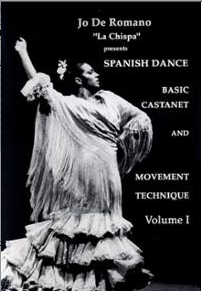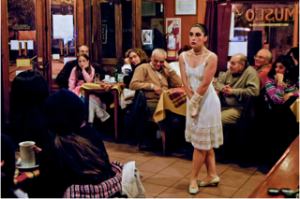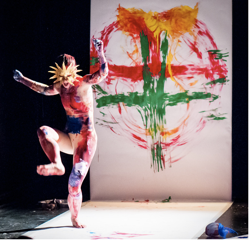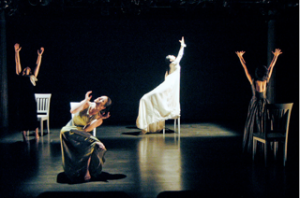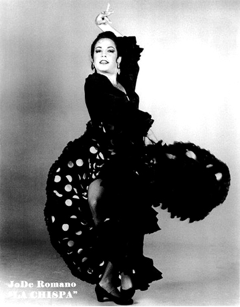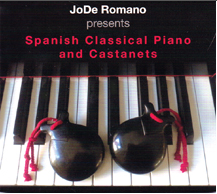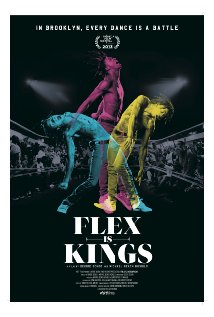 Directed by Deirdre Schoo and Michael Beach Nichols
Directed by Deirdre Schoo and Michael Beach Nichols
The 2013 documentary Flex Is Kings dives headfirst and somersaulting into the world of Flexing, a style of street dance centered in the Brooklyn neighborhood of East New York.
Schoo has captured a do-it-yourself dance movement in the most appropriate way. In an interview for The Wrap, she describes how she met a Flex dancer on a photo shoot and felt inspired to tell the story of Flex. Flex Is Kings, like Battlefest, is a grassroots, self- and crowd-funded operation.
Much of Flex dancing is narrative, an extreme reflection of life in East New York. It’s athletic, flashy and theatrical, full of aggressive one-ups and punchlines (showstopping stunts involving anything from acrobatics to magic tricks) executed to the soundtrack of “B.A!” cheers from an all-ages crowd, including Flizzo’s finger-gunshooting grandmother.
There’s no discussion of Flex’s evolution as a dance style, and here it doesn’t seem to matter. What’s evident is what Flex is to the dancers: a fleeting escape from the tough realities of life, a way of getting out and bringing home culture with you, a way of shaping the future. As one dancer puts it, “It’s really raw. It comes from us, from the neighborhood.”
Schoo and Nichols focus on three personalities. The unstoppable impresario Reem is the force behind Battlefest, a series of dance battles in Brooklyn. In the film, he’s a guide and anchor for this universe who dreams of leaving “a global imprint of what Battlefest, of what extreme street dancing is all about.” He coaches the dancers that they’re role models in their world and representatives of Flex to the world outside. Without knowing who might show up at Battlefest, they should look clean and presentable, “your jeans not on your knees…You’ve got to understand where you want to go”
For Jay Donn, another featured personality, dancing opens up an entirely new world of opportunities. He’s sought by modern dance group Company XIV to perform in a new Pnicchio, an adventure that takes him on a month-long trip to Scotland for the Edinburgh Fringe Fest. Wide-eyed and speechless, he couldn’t look more incongruous than when passing out flyers outside L’Occitane on the streets of mostly-white Edinburgh.
Unemployed with two young children, Jermaine “Flizzo” Clement uses performing to escape from his rough past and harsh present. As a mentor to neighborhood youth, he uses his talent to help shape a better future for the next generation. He has a mentor in Jay, who urges him to “keep doing your thing…and if you don’t make it here we’re gonna make it somewhere, together. This is the life. I deserve it, so do you.”
The film culminates in a frenetic sequence that cuts back and forth between Pinocchio and King of the Streets. It’s all energy and inspiration from there, neatly finished with a brief epilogue for each of the three principal characters.
Flex Is Kings has appeared at film festivals across the country. This inspiring, don’t-miss-it documentary is available on iTunes and Vimeo OnDemand.
Disclosure: 4dancers previously ran an ad for this DVD.





